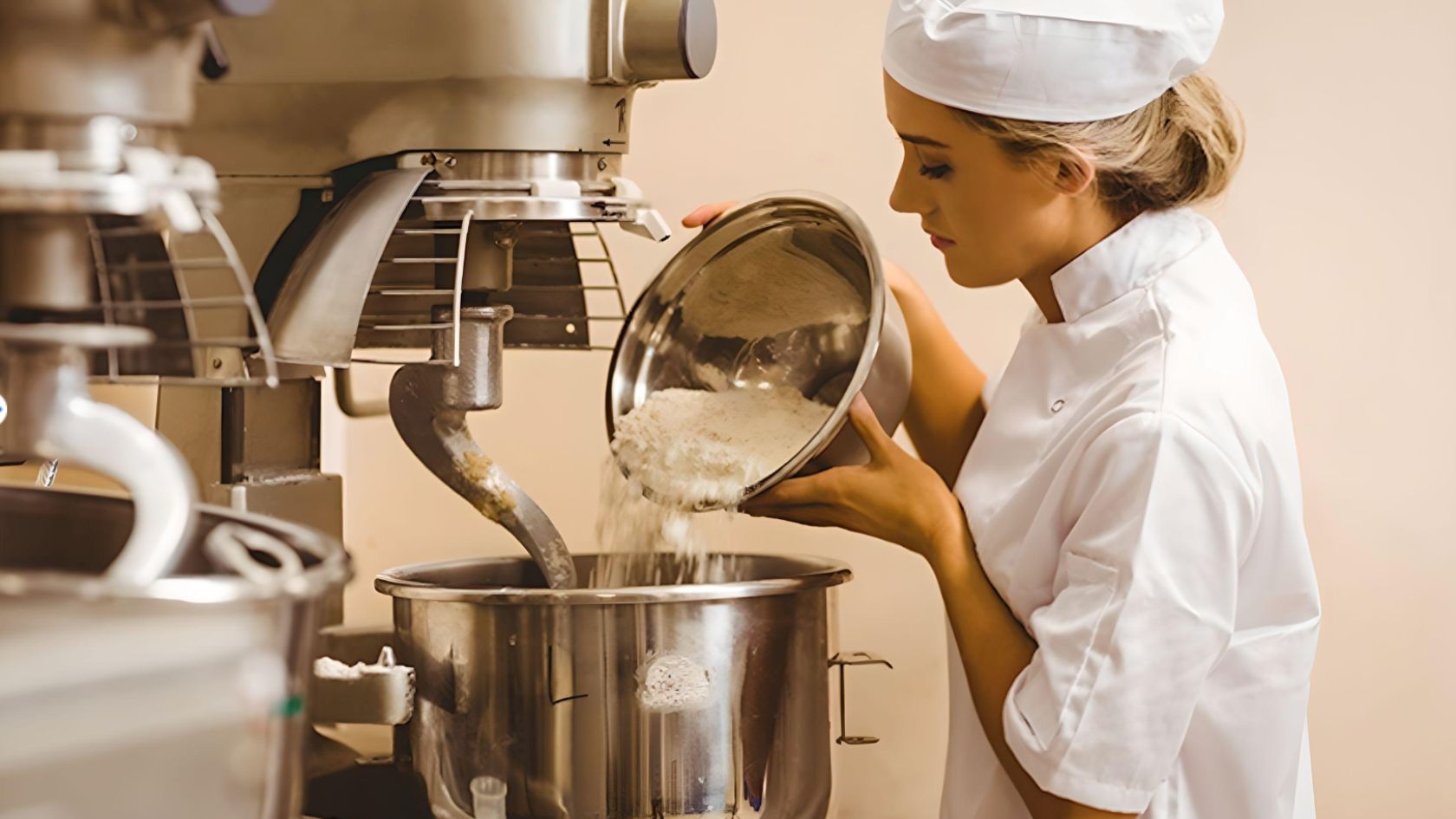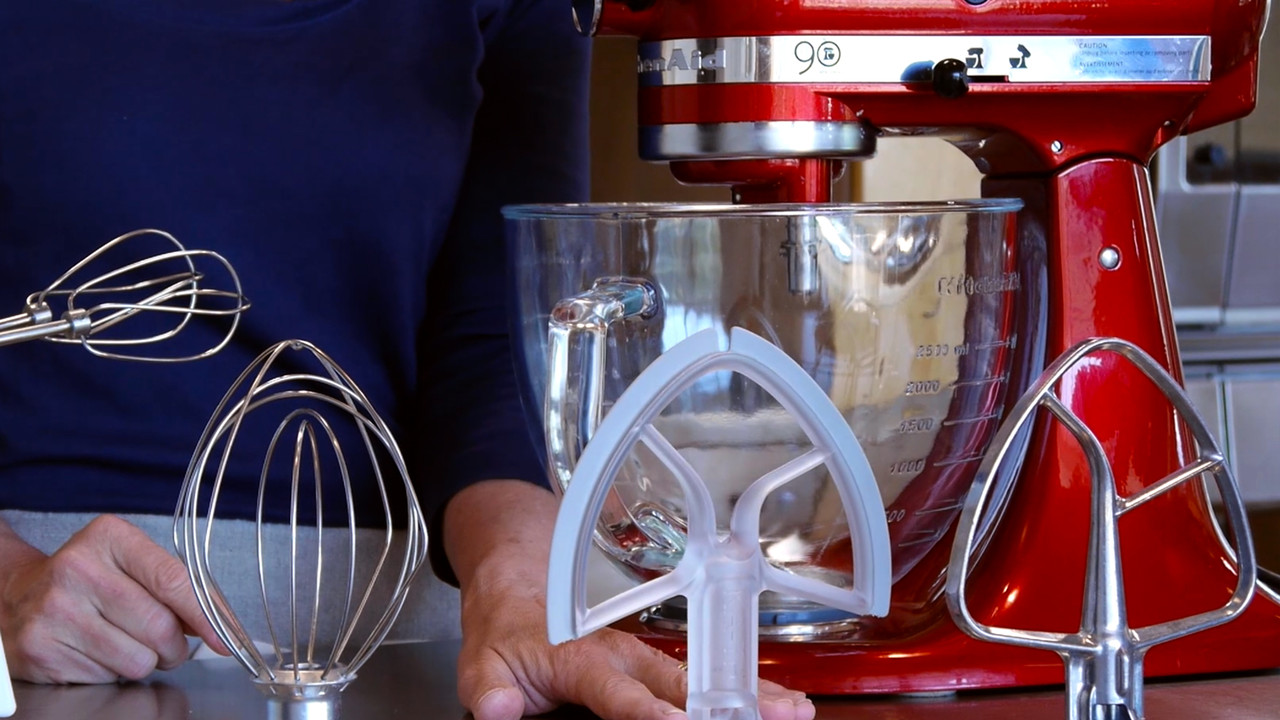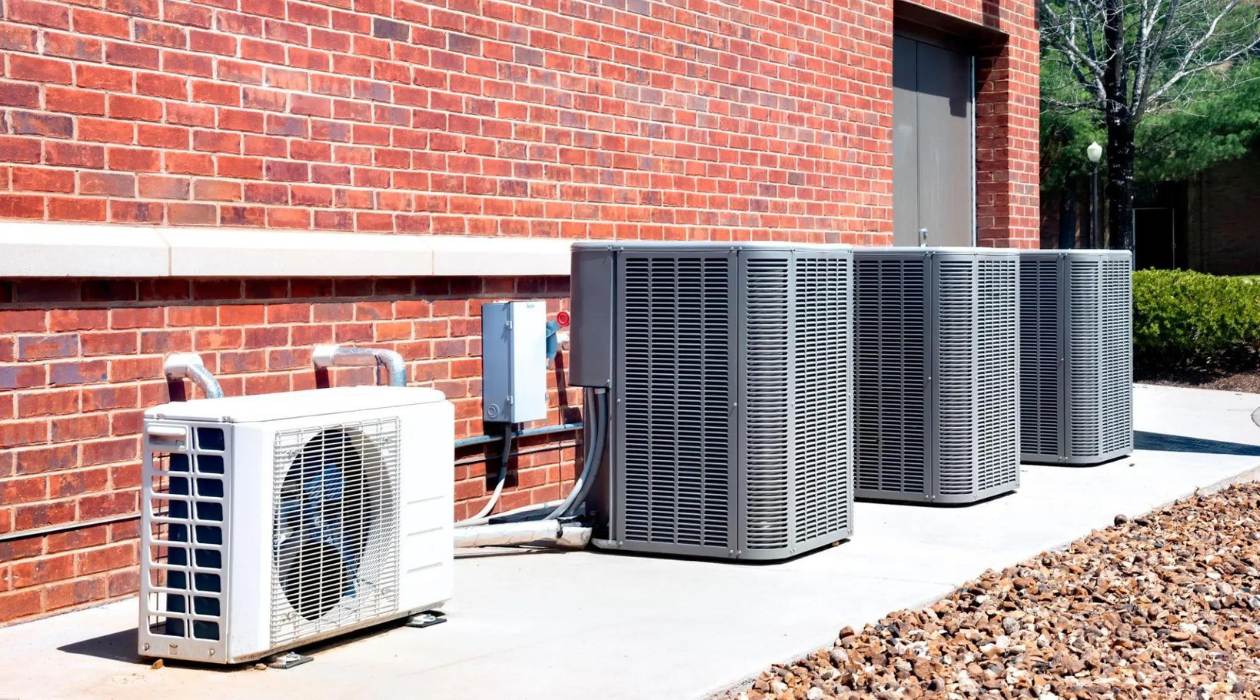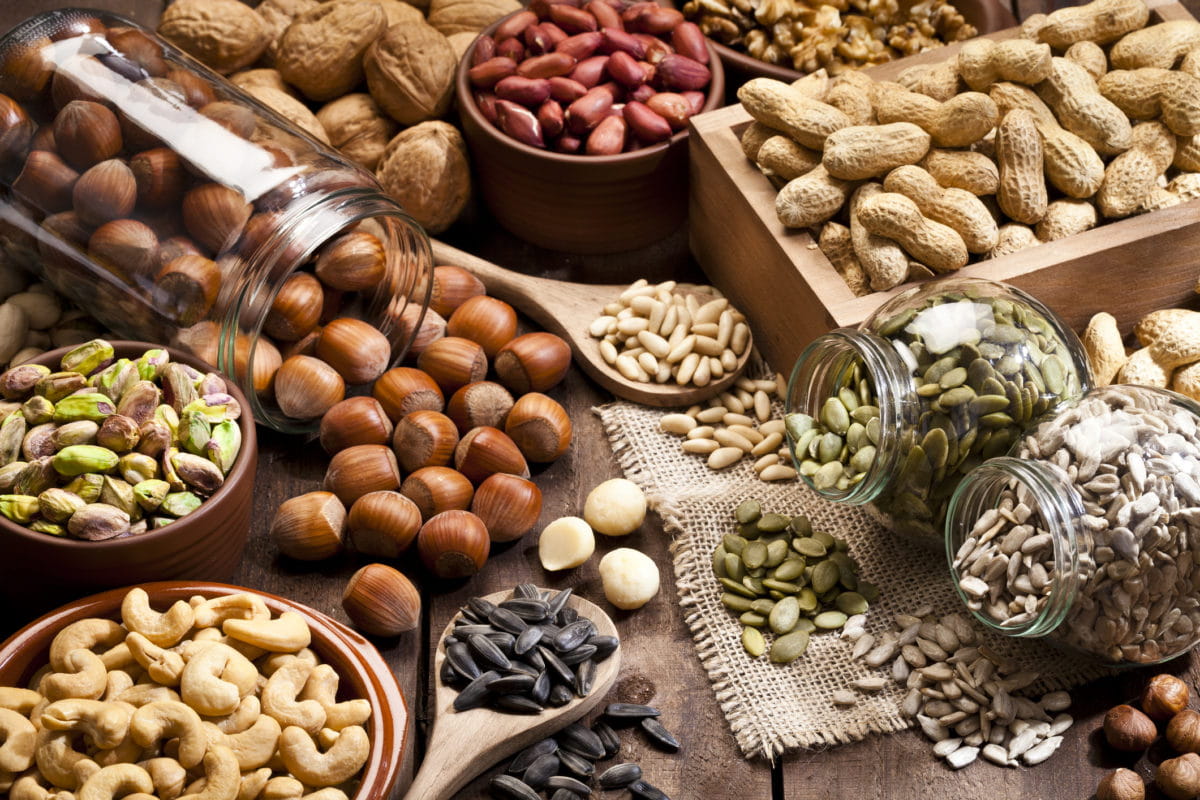Home>Articles>What Is The Primary Difference Between A Planetary Mixer And A Spiral Mixer?


Articles
What Is The Primary Difference Between A Planetary Mixer And A Spiral Mixer?
Modified: October 19, 2024
Discover the primary difference between a planetary mixer and a spiral mixer in this informative article. Find out which one suits your baking needs better.
(Many of the links in this article redirect to a specific reviewed product. Your purchase of these products through affiliate links helps to generate commission for Storables.com, at no extra cost. Learn more)
Introduction
When it comes to mixing ingredients for baking or cooking, having the right equipment is essential. Two popular types of mixers that are commonly used in commercial kitchens are planetary mixers and spiral mixers. While both of them are designed to mix dough and other ingredients, they have distinct features and functions that set them apart.
In this article, we will explore the primary differences between planetary mixers and spiral mixers, as well as their advantages and factors to consider when choosing between them. By understanding the unique characteristics of each type of mixer, you can make an informed decision on which one best suits your specific needs.
Key Takeaways:
- Planetary mixers offer versatility, precise control, and efficient mixing for a wide range of recipes. Their multiple attachments and variable speed settings make them indispensable tools in commercial kitchens.
- Spiral mixers specialize in efficient gluten development, large dough capacities, and space efficiency. Their gentle kneading action and compact design make them ideal for high-volume production in bakeries and pizzerias.
Overview of Planetary Mixers
Planetary mixers are versatile and widely used in commercial kitchens, particularly in bakeries and pastry shops. These mixers consist of a stationary bowl and an agitator that moves in a circular motion while rotating on its own axis. The name “planetary” is derived from the movement of the agitator, resembling the orbit of planets around the sun.
One of the key features of planetary mixers is their multiple attachments. These mixers typically come with a variety of attachments such as whisks, dough hooks, and beaters. This versatility allows them to handle a wide range of tasks, from whipping cream and egg whites to mixing heavy doughs and batters.
Planetary mixers also offer variable speed settings, allowing you to adjust the speed according to the consistency of the ingredients. This flexibility is particularly useful when working with delicate mixtures that require gentle stirring or more robust ones that call for vigorous mixing.
Additionally, most planetary mixers have a tilting head design, which makes it easy to access the mixing bowl and remove the ingredients. This feature is especially convenient when adding additional ingredients or scraping down the sides of the bowl during the mixing process.
Furthermore, planetary mixers are equipped with a powerful motor, ensuring efficient and thorough mixing. The agitator reaches the sides of the bowl and creates a scraping action, ensuring that all ingredients are incorporated evenly. This results in consistent dough texture and improved product quality.
Features and Functions of Planetary Mixers
Planetary mixers are known for their versatile features and wide range of functions. Here are some of the key features and functions of planetary mixers:
1. Multiple Attachments: Planetary mixers come with various attachments such as whisks, dough hooks, and beaters. These attachments can be easily interchanged to handle different mixing tasks, from whisking eggs to kneading dough.
2. Variable Speed Settings: Most planetary mixers offer multiple speed settings, allowing you to adjust the speed according to the ingredients being mixed. This flexibility ensures precise control over the mixing process and helps achieve the desired consistency.
3. Tilting Head Design: The tilting head design of planetary mixers allows easy access to the mixing bowl. This makes it convenient to add ingredients or remove the bowl for cleaning.
4. Large Capacity: Planetary mixers come in various sizes, offering a wide range of mixing capacities. This makes them suitable for both small-scale and large-scale baking or cooking operations.
5. Powerful Motor: Planetary mixers are equipped with robust motors that provide high-performance mixing capabilities. The powerful motor ensures thorough mixing and can handle heavy doughs and batters with ease.
6. Efficient Mixing Action: The planetary mixing action of these mixers ensures that the ingredients are evenly mixed. The agitator moves in a circular motion while rotating on its own axis, reaching all parts of the bowl and achieving consistent mixing results.
7. Timer Function: Some advanced models of planetary mixers feature a timer function, allowing you to set a specific mixing time. This feature is helpful for recipes that require precise timing or for multitasking in the kitchen.
8. Durable Construction: Planetary mixers are built to withstand heavy use in commercial kitchens. They are constructed with durable materials such as stainless steel, ensuring longevity and reliability.
9. Safety Features: Many planetary mixers are equipped with safety features such as overload protection and emergency stop buttons. These features help prevent accidents and ensure safe operation.
In summary, the features and functions of planetary mixers make them highly versatile and suitable for a wide range of mixing tasks in commercial kitchens. Their ability to handle multiple attachments, offer variable speed settings, and provide efficient mixing action makes them an indispensable tool for professional bakers and chefs.
Advantages of Planetary Mixers
Planetary mixers offer several advantages that make them a preferred choice in commercial kitchens. Here are some of the key advantages of using planetary mixers:
1. Versatility: Planetary mixers are incredibly versatile and can handle a wide range of mixing tasks. With their multiple attachments, they can whip, beat, knead, and mix various ingredients, making them suitable for a variety of recipes.
2. Precise Control: The variable speed settings of planetary mixers allow for precise control over the mixing process. This is particularly important when working with delicate ingredients that require gentle mixing or when incorporating ingredients gradually.
3. Consistent Mixing: The planetary mixing action of these mixers ensures that all ingredients are thoroughly and consistently mixed. The agitator reaches the sides and bottom of the bowl, preventing any pockets of unmixed ingredients.
4. Efficient Performance: Planetary mixers are equipped with robust motors that provide powerful mixing performance. The high-powered motor ensures that even the toughest doughs can be mixed easily and efficiently.
5. Time-Saving: The efficient mixing action and powerful motor of planetary mixers help reduce mixing time significantly. This is particularly beneficial in commercial kitchens where time is of the essence.
6. Durability: Planetary mixers are built to withstand the demands of a commercial kitchen. With their sturdy construction and high-quality materials, they can withstand heavy use and last for a long time.
7. Easy to Clean: Most planetary mixers feature a tilting head design, which makes it easy to access the mixing bowl for cleaning. Additionally, the removable attachments can be easily cleaned, ensuring proper hygiene in the kitchen.
8. Safety Features: Planetary mixers often come with safety features such as overload protection and emergency stop buttons. These features help prevent accidents and ensure the safety of the users.
9. Professional Results: Due to their precise control and consistent mixing, planetary mixers help achieve professional-quality results. Bakers and chefs can rely on these mixers to produce consistent and well-mixed doughs and batters.
Overall, the versatility, precise control, efficient performance, and durability of planetary mixers make them an excellent choice for commercial kitchens. Their ability to produce consistent and professional results saves time and effort, making them a valuable tool for professional bakers and chefs.
Overview of Spiral Mixers
Spiral mixers are widely used in commercial bakeries and pizzerias for mixing and kneading dough. These mixers have a unique design that sets them apart from other types of mixers. Instead of a stationary bowl, spiral mixers have a rotating bowl and a stationary spiral-shaped agitator that revolves around it.
The spiral-shaped agitator is responsible for kneading and mixing the dough thoroughly. As the bowl rotates, the agitator gently works the dough, ensuring that all the ingredients are evenly distributed and properly mixed.
One of the primary features of spiral mixers is their ability to handle large volumes of dough. These mixers come in various sizes, ranging from small countertop models to large industrial-sized machines. The large bowl capacity allows for batch mixing, making them ideal for high-volume production.
Spiral mixers also offer single-speed or two-speed options, allowing you to choose the appropriate speed for your dough consistency. This feature ensures that the dough is mixed accurately, resulting in the desired texture and quality.
Additionally, spiral mixers are known for their efficiency in gluten development. The gentle and consistent kneading action of the spiral agitator enables the gluten in the dough to develop properly, resulting in dough that is elastic and well-structured.
Another advantage of spiral mixers is their compact design. These mixers are often more space-efficient than planetary mixers, making them suitable for kitchens with limited counter space. They are also easier to operate, with simple controls that allow for user-friendly operation.
The primary difference between a planetary mixer and a spiral mixer is the motion of the mixing tool. Planetary mixers have a rotating, “planetary” motion, while spiral mixers have a spiral-shaped agitator that rotates and kneads the dough.
Features and Functions of Spiral Mixers
Spiral mixers have several unique features and functions that make them a popular choice for commercial bakeries and pizzerias. Let’s explore these features and functions in more detail:
1. Spiral-Shaped Agitator: The prominent feature of spiral mixers is the spiral-shaped agitator, which is responsible for kneading and mixing the dough. The spiral agitator gently works the dough, ensuring thorough mixing and gluten development.
2. Large Bowl Capacity: Spiral mixers are designed to handle large volumes of dough. They come in various sizes, allowing for batch mixing of dough for high-volume production. The large bowl capacity is particularly beneficial for bakeries that need to produce large quantities of bread or pizza dough.
3. Single-Speed or Two-Speed Options: Spiral mixers offer the flexibility of choosing between single-speed and two-speed options. This allows you to select the appropriate speed for your specific dough consistency, ensuring optimal mixing results.
4. Efficient Gluten Development: The gentle and consistent kneading action of the spiral agitator encourages efficient gluten development in the dough. This leads to a well-structured and elastic dough, resulting in a superior finished product.
5. Compact Design: Spiral mixers are known for their compact design, making them suitable for kitchens with limited counter space. Their space-efficient design allows for easy placement and integration into busy kitchen environments.
6. Simple Controls: Spiral mixers feature user-friendly controls, making them easy to operate. The intuitive controls allow for quick adjustments of the mixing speed and timing, ensuring precise control over the mixing process.
7. Durability and Reliability: Spiral mixers are built to withstand the demands of commercial use. They are constructed with durable materials, such as stainless steel, ensuring their longevity and reliability in busy kitchen environments.
8. Easy Maintenance: Spiral mixers are relatively easy to maintain. The removable bowl and agitator can be easily cleaned, promoting proper hygiene in the kitchen. Regular maintenance and cleaning ensure the longevity and performance of the mixer.
9. Versatile Applications: While spiral mixers are commonly used in bakeries and pizzerias for dough mixing, they can also be used for mixing other types of batters and doughs. Their versatility makes them a valuable tool in various culinary applications.
In summary, spiral mixers offer several features and functions that cater to the unique needs of commercial bakeries and pizzerias. Their spiral-shaped agitator, large bowl capacity, efficient gluten development, compact design, and user-friendly controls make them a reliable and efficient mixing solution for producing high-quality dough.
Advantages of Spiral Mixers
Spiral mixers offer several advantages that make them a preferred choice for commercial bakeries and pizzerias. Let’s explore the key advantages of using spiral mixers:
1. Efficient Dough Mixing: Spiral mixers are specifically designed for efficient dough mixing. The spiral-shaped agitator effectively kneads and mixes the dough, ensuring thorough incorporation of ingredients and proper gluten development. This results in a consistent and high-quality dough.
2. Large Dough Capacity: Spiral mixers are capable of handling large volumes of dough. Their large bowl capacity allows for batch mixing, making them ideal for high-volume production. This is particularly beneficial for bakeries or pizzerias that need to produce large quantities of dough on a regular basis.
3. Gentle Kneading Action: The spiral agitator gently works the dough, minimizing the risk of overheating the dough or damaging the gluten structure. This ensures that the dough retains its desired texture and elasticity, resulting in a better-quality finished product.
4. Time Efficiency: Spiral mixers are known for their time-efficient mixing process. The consistent and efficient kneading action reduces mixing time, allowing for increased productivity and faster turnaround in busy commercial kitchens.
5. Space Efficiency: Spiral mixers have a compact design, making them more space-efficient compared to other types of mixers. This is particularly advantageous for kitchens with limited counter space or smaller setups where maximizing workspace is crucial.
6. Durability and Reliability: Spiral mixers are built to withstand the demands of commercial use. They are constructed with durable materials, such as stainless steel, ensuring their longevity and reliability even with frequent use. This makes them a cost-effective investment for businesses in the long run.
7. Versatility: While spiral mixers are primarily used for dough mixing, they can also be versatile in handling other mixing tasks. They can be used for mixing batters, creams, and other food preparations, expanding their utility in a commercial kitchen.
8. Ease of Use and Maintenance: Spiral mixers are generally easy to use, with simple controls for adjusting speed and time. Additionally, their removable bowl and agitator make them easy to clean and maintain, promoting proper sanitation and hygiene in the kitchen.
9. Consistent Results: The efficient and controlled mixing process of spiral mixers ensures consistent results with each batch of dough. This consistency is crucial in commercial baking or pizza production, where uniformity is key to customer satisfaction.
In summary, spiral mixers offer efficient dough mixing, large capacity, time efficiency, and space-saving design, making them an advantageous choice for commercial bakeries and pizzerias. Their durability, versatility, ease of use, and consistent results contribute to their popularity in professional food establishments.
Primary Differences between Planetary Mixers and Spiral Mixers
While both planetary mixers and spiral mixers are used for mixing dough and other ingredients, they have distinct features and functions that set them apart. Here are the primary differences between the two:
1. Mixing Action: The main difference lies in the mixing action of the two mixers. Planetary mixers have an agitator that moves in a circular motion while rotating on its own axis. This allows the agitator to reach all parts of the bowl, resulting in thorough and consistent mixing. On the other hand, spiral mixers have a stationary spiral-shaped agitator that revolves around a rotating bowl. The spiral agitator gently kneads and mixes the dough, ensuring efficient gluten development.
2. Bowl Design: Planetary mixers have a stationary bowl, which makes it easy to access and remove ingredients during the mixing process. They typically come with a tilting head, allowing for convenient handling. In contrast, spiral mixers have a rotating bowl, which requires the dough to be placed in the bowl and mixed while the bowl rotates.
3. Dough Capacity: Spiral mixers are typically designed for larger dough capacities compared to planetary mixers. Spiral mixers are commonly used in commercial bakeries and pizzerias for high-volume production, whereas planetary mixers are suitable for smaller to medium-sized batches.
4. Mixing Speed: Planetary mixers offer variable speed settings, allowing for a higher level of control over the mixing process. This is particularly beneficial when working with different ingredients that require varying mixing speeds. Spiral mixers, on the other hand, usually have single-speed or two-speed options, providing simplicity and ease of use.
5. Gluten Development: Spiral mixers are especially effective in developing gluten in the dough due to their gentle kneading action. The spiral-shaped agitator works the dough consistently, resulting in proper gluten structure development. Planetary mixers can also develop gluten but may require a longer mixing time and more intervention to achieve the same level of gluten development.
6. Space and Size: Spiral mixers are generally more compact and take up less space compared to planetary mixers. This makes them suitable for businesses with limited kitchen space or smaller setups. Planetary mixers are often larger and more suitable for larger commercial kitchens with ample counter space.
7. Versatility: Planetary mixers are known for their versatility, as they come with multiple attachments for various mixing tasks. They can handle a broader range of mixing applications beyond dough, such as whipping cream or mixing batters. Spiral mixers, while primarily used for dough mixing, may have limitations in terms of other mixing tasks.
8. Price: In general, spiral mixers tend to have a higher price point compared to planetary mixers. This is primarily due to their larger capacity and specialized design for heavy-duty dough mixing. Planetary mixers are often more affordable and offer a good balance between performance and cost.
In summary, the primary differences between planetary mixers and spiral mixers lie in their mixing action, bowl design, dough capacity, mixing speed, gluten development, space requirements, versatility, and price. Understanding these differences can help businesses choose the mixer that best suits their specific needs and requirements in terms of dough mixing and overall kitchen setup.
Factors to Consider in Choosing Between Planetary and Spiral Mixers
When it comes to choosing between a planetary mixer and a spiral mixer, there are several important factors to consider. Each type of mixer has its own strengths and limitations, so it’s essential to assess your specific needs and requirements. Here are some factors to consider in making your decision:
1. Dough Capacity: Consider the volume of dough you will be working with on a regular basis. If you require a high dough capacity for large-scale production, a spiral mixer may be the more suitable choice. Spiral mixers are designed to handle larger quantities of dough, making them ideal for bakeries with high-demand output.
2. Mixing Action: Think about the type of mixing action you prefer for your recipes. Planetary mixers provide a versatile mixing action, as the agitator moves in a circular motion while rotating on its own axis. This allows for thorough mixing and the incorporation of different ingredients. Spiral mixers, with their spiral-shaped agitator revolving around a rotating bowl, provide gentle kneading action that is well-suited for dough mixing.
3. Gluten Development: If your recipes require proper gluten development, consider the type of mixer that can achieve this effectively. Spiral mixers are known for their efficient gluten development due to their gentle kneading action. This makes them a good choice for bread and pizza dough that rely on proper gluten structure. However, planetary mixers can also develop gluten with longer mixing times and proper technique.
4. Space and Size: Evaluate the available counter space in your kitchen. Spiral mixers are generally more compact and space-efficient compared to planetary mixers. If you have limited space or a smaller kitchen setup, a spiral mixer may be a better fit. Planetary mixers, on the other hand, tend to be larger and require more counter space.
5. Versatility: Consider the range of mixing tasks you need the mixer to perform. Planetary mixers excel in versatility, as they come with attachments for various mixing applications beyond dough. They can whip cream, beat batters, and more. If you require a mixer that can handle a broader range of tasks, a planetary mixer may be the preferable choice.
6. Budget: Determine your budget for the mixer. Spiral mixers often come with a higher price tag due to their specialized design for heavy-duty dough mixing and larger capacity. Planetary mixers are generally more affordable and offer a cost-effective option without compromising performance.
7. Maintenance and Ease of Use: Evaluate the maintenance requirements and ease of use of each type of mixer. Consider factors such as cleaning ease, control features, and user-friendly operation. Both types of mixers require regular cleaning, but the specific design elements may impact ease of maintenance.
It’s important to carefully assess these factors and prioritize your specific needs when making a decision between a planetary mixer and a spiral mixer. Consider the volume of dough, required mixing action, gluten development, available space, versatility, budget, and ease of maintenance. By doing so, you can choose the mixer that best suits your operational requirements and helps you achieve optimal results in your culinary endeavors.
Conclusion
Choosing the right mixer for your baking or cooking needs is crucial for achieving optimal results in your kitchen. Both planetary mixers and spiral mixers offer unique features and functions that cater to specific requirements. As you consider whether to invest in a planetary mixer or a spiral mixer, it’s important to weigh the advantages, differences, and factors that we discussed.
If you require versatility, precise control, and the ability to handle various mixing tasks, a planetary mixer may be the ideal choice. Planetary mixers offer multiple attachments, variable speed settings, and efficient mixing action, making them versatile and suitable for a wide range of recipes. They excel in producing consistent and professional-quality results, making them valuable tools in commercial kitchens.
On the other hand, if you primarily work with dough and require a mixer that specializes in efficient gluten development and large dough capacities, a spiral mixer could be the better option. Spiral mixers are known for their gentle kneading action and their ability to handle high volumes of dough efficiently. They are space-efficient and reliable, making them popular choices in commercial bakeries and pizzerias.
Ultimately, the decision between a planetary mixer and a spiral mixer depends on your specific needs and priorities. Consider factors such as dough capacity, mixing action, gluten development, available space, versatility, budget, and ease of maintenance. By carefully evaluating these factors, you can make an informed decision that aligns with your operational requirements and helps you achieve consistent and high-quality results in your culinary endeavors.
Remember, both types of mixers have their own strengths and limitations, so it’s essential to assess what is most important for your specific kitchen setup and desired outcomes. Whichever type of mixer you choose, investing in a reliable and high-quality machine will undoubtedly enhance your mixing processes and contribute to the overall success of your culinary creations.
Frequently Asked Questions about What Is The Primary Difference Between A Planetary Mixer And A Spiral Mixer?
Was this page helpful?
At Storables.com, we guarantee accurate and reliable information. Our content, validated by Expert Board Contributors, is crafted following stringent Editorial Policies. We're committed to providing you with well-researched, expert-backed insights for all your informational needs.














0 thoughts on “What Is The Primary Difference Between A Planetary Mixer And A Spiral Mixer?”